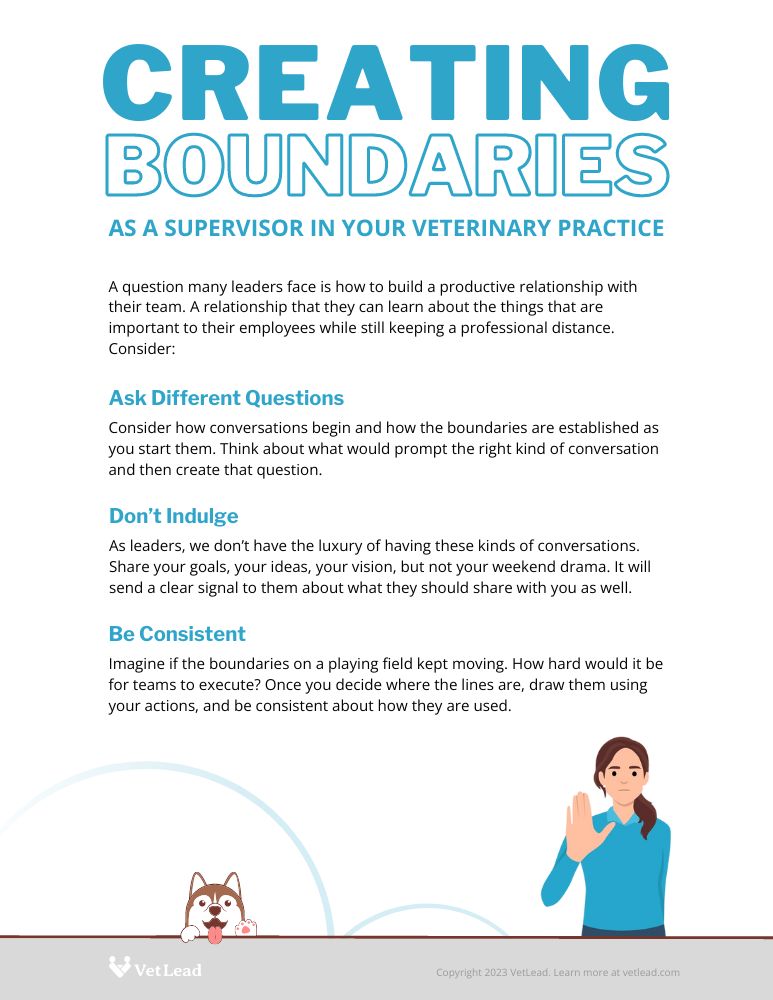Check our the recording of our latest live event, The Individual Development Plan
I was working with a leader recently who wanted the people on her team to treat their relationship with her differently. She was approachable, compassionate, and empathetic to her team. Because of this, they began to share every trouble, woe, and bit of drama in their lives with her.
This often happened when there were pressing business issues that needed to be discussed instead.
Productive Relationship While Keeping Distance
The question many leaders face is how to build a productive relationship with their team. A relationship that they can learn about the things that are important to their employees. They can learn about their employees’ goals and ambitions, but keep enough distance that employees do not share details of every life struggle.

Test Drive a VetLead Membership for Free
Try a 7-day free trial, then keep it for just $39 per month after.
Without knowing our employees’ personal goals and life’s desires, our coaching will be ineffective. But we really don’t want to spend critical work time hearing about what they did over the weekend either.
Chalking the Field
The solution is in a concept called “chalking the field.” Think about the grounds crew preparing for a sporting event. They establish the limits of game play by placing chalk lines on the field. Once the chalk is placed on the field, everyone can see it. Calls are made based on these lines and there are no questions about what is in and out of bounds.
We do the same thing in our practice, but more by what we do than what we say. Telling our team what is out of bounds is much less effective than acting in a way that reinforces it. Consider these tools for chalking the field for your team.
Ask Different Questions
Consider how conversations begin and how the boundaries are established as you start them. Think about what would prompt the right kind of conversation and then create that question. It might sound something like, “John, we have about 30 minutes to talk this morning and I want to make sure that I address what’s most important to you. What do you think the priorities are for us today?”

Create a question that makes it very difficult to select car shopping or Aunt Martha as the topic of conversation. However, the question should still reinforce that they get to have some say in how the discussion plays out.
You have chalked the field, but they still get to call some of the plays.
Don’t Indulge
Whenever you participate in a conversation, you validate it. I have known leaders who spend enormous amounts of time sharing their own personal drama. Then, they get frustrated when the people on their team do the same.
As leaders, we don’t have the luxury of having these kinds of conversations. Share your goals, your ideas, your vision, but not your weekend drama. It will send a clear signal to them about what they should share with you as well.
Be Consistent
Imagine if the boundaries on the playing field kept moving. How hard would it be for teams to execute? How could they plan, prepare, and practice effectively if these lines were subject to interpretation or mood?
Once you decide where the lines are, draw them using your actions, and be consistent about how they are used.
Final Thought
People respond to us the way we teach them to. Our job as a leader is to make conscious choices about what’s best for the practice and ultimately the individuals who are part of it.
Decide where the limits are and then observe them yourself. Pretty soon it will be clear to everyone how the game is played and when everyone understands that, the team can focus on winning.

Download this PDF Now
Quickly share the key points of this blog post with leaders and teams. No email address required.
Waiting for you in the comments ....

